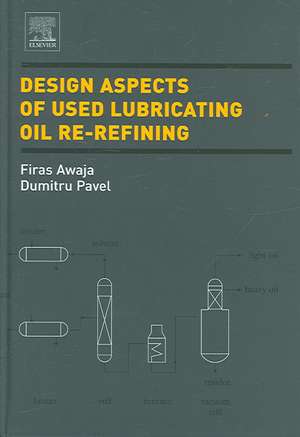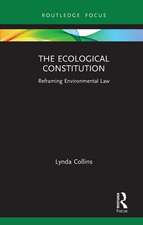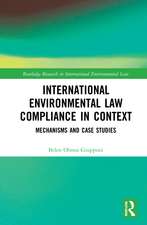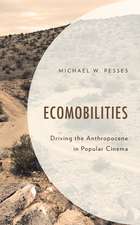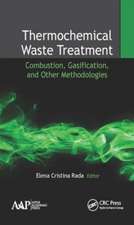Design Aspects of Used Lubricating Oil Re-Refining
Autor Firas Awaja, Dumitru Pavelen Limba Engleză Hardback – 11 apr 2006
•Addresses and demonstrates the current knowledge of the process behaviour and re-refining technology of used lubricating oils•Introduces background information on the lubrication, oil recycling industry outlining the major manufacturers and detailing their processes•Contains 94 figures and 22 tables that on results regarding the re-refining process behaviour of used lubricating oil
Preț: 1173.57 lei
Preț vechi: 1607.63 lei
-27% Nou
Puncte Express: 1760
Preț estimativ în valută:
224.59€ • 243.87$ • 188.65£
224.59€ • 243.87$ • 188.65£
Carte tipărită la comandă
Livrare economică 22 aprilie-06 mai
Preluare comenzi: 021 569.72.76
Specificații
ISBN-13: 9780444522283
ISBN-10: 044452228X
Pagini: 122
Dimensiuni: 165 x 240 x 10 mm
Greutate: 0.38 kg
Editura: ELSEVIER SCIENCE
ISBN-10: 044452228X
Pagini: 122
Dimensiuni: 165 x 240 x 10 mm
Greutate: 0.38 kg
Editura: ELSEVIER SCIENCE
Public țintă
Recommended to engineers and scientists in the oil refining industry as well as chemical engineering and industrial chemistry students as the methodologies outlined in this book will be useful in their project design, and enhance their analytical knowledge of a chemical process with respect to productivity and efficiencyCuprins
PrefaceAcknowledgementChapter 1: IntroductionChapter 2: BackgroundChapter 3: Experimental, Materials and Methods Chapter 4: The Re-refining Process Experimental ResultsChapter 5: Re-refining Process ConclusionsReferencesAppendix A
